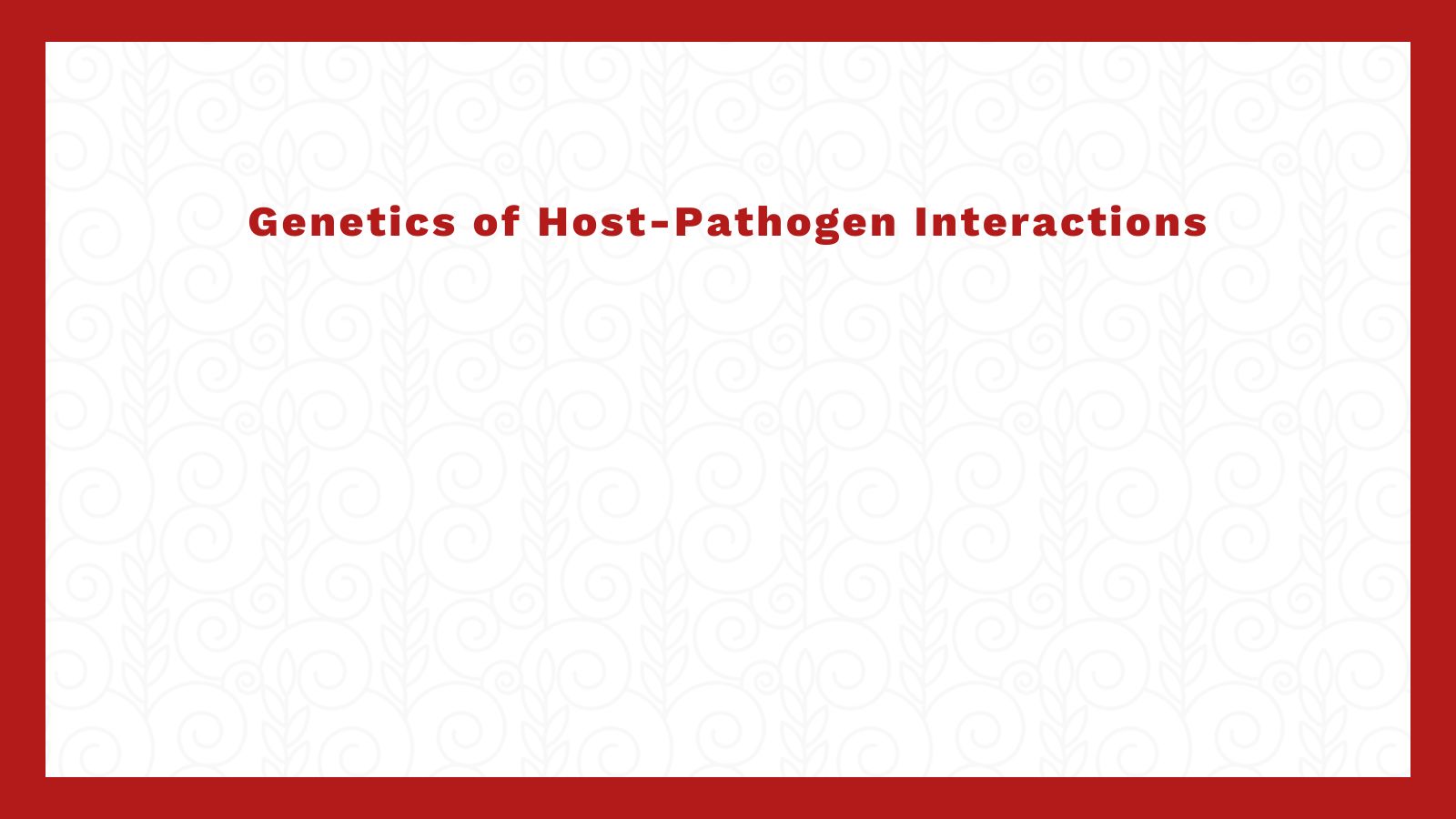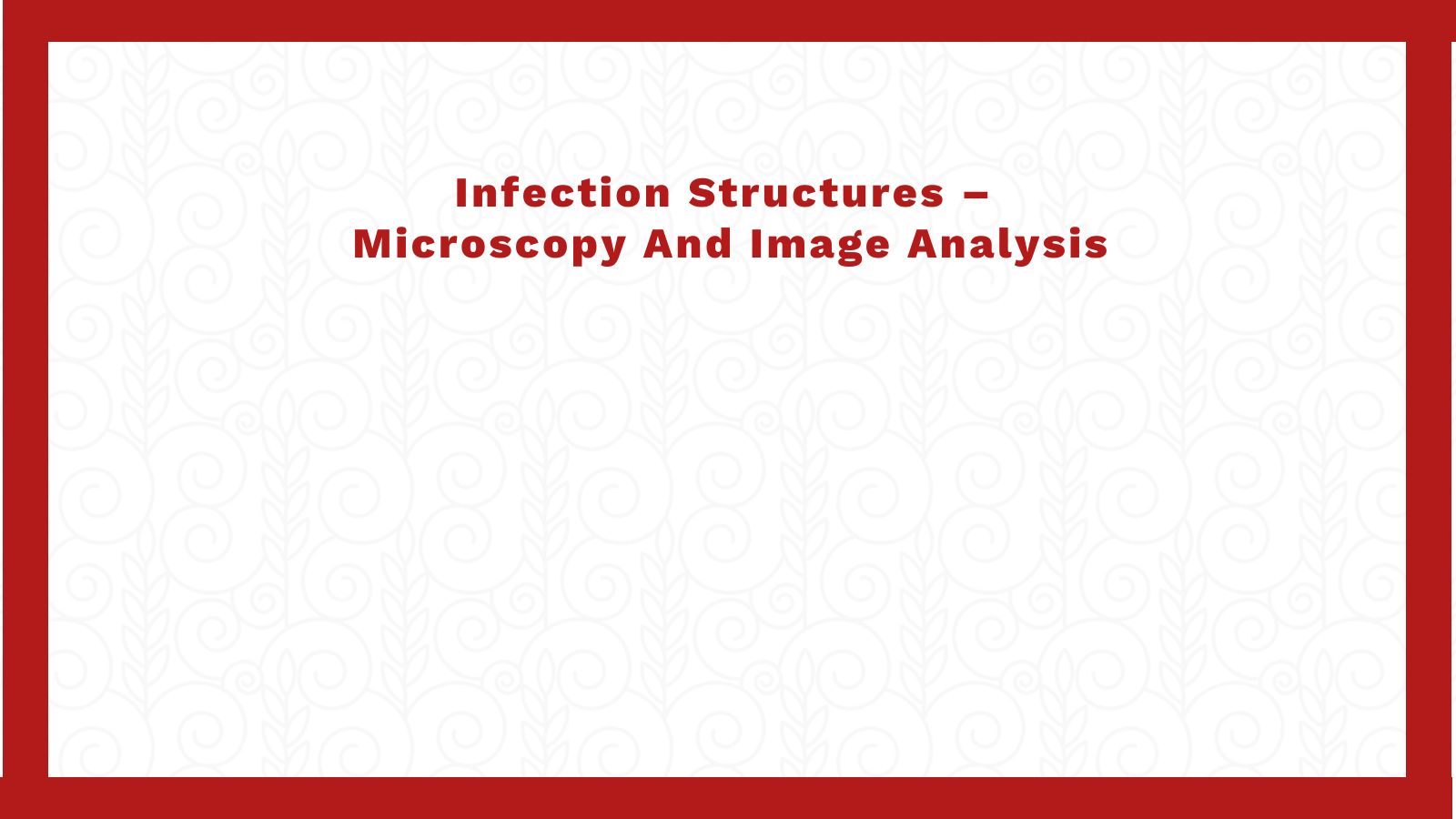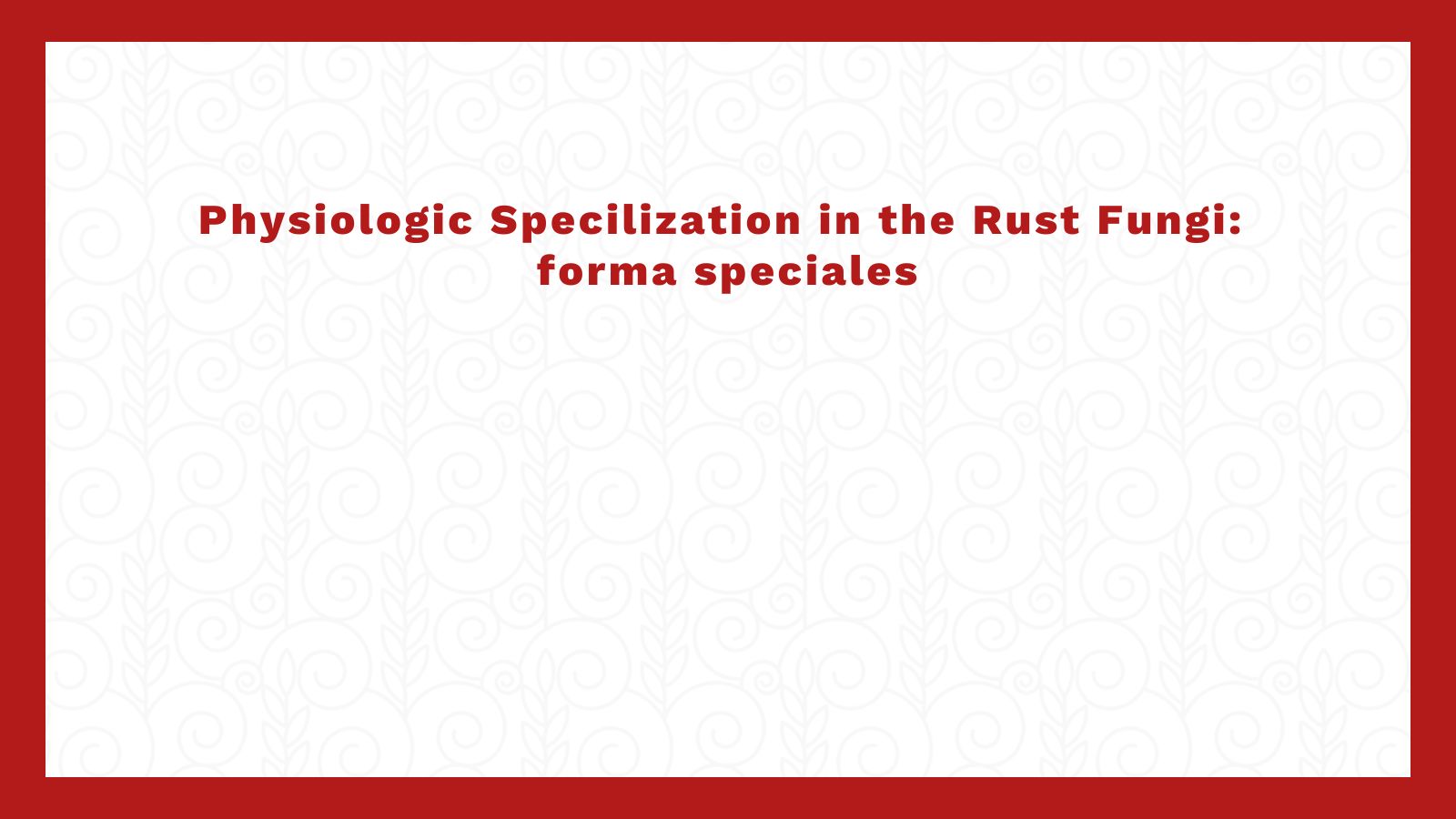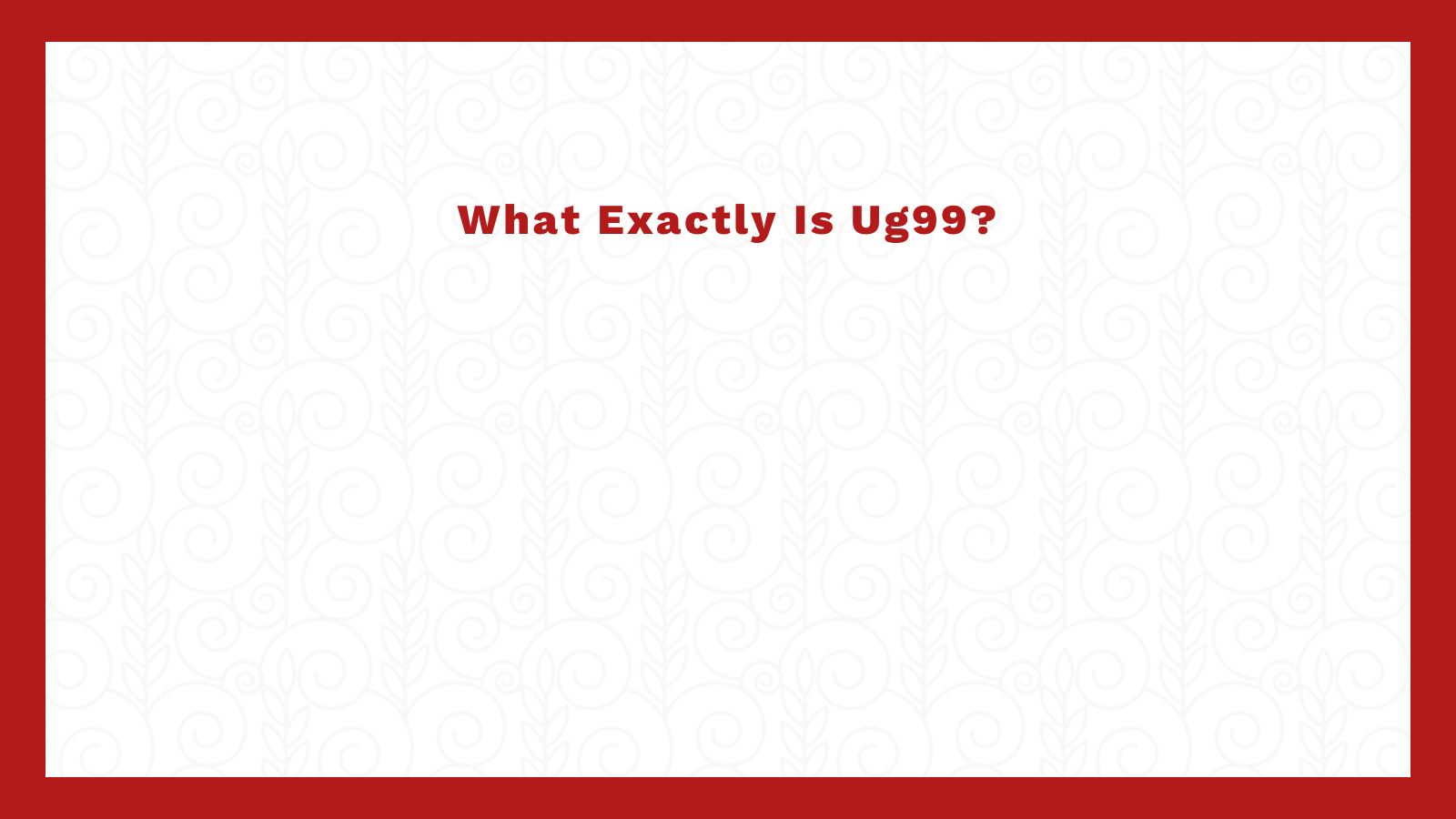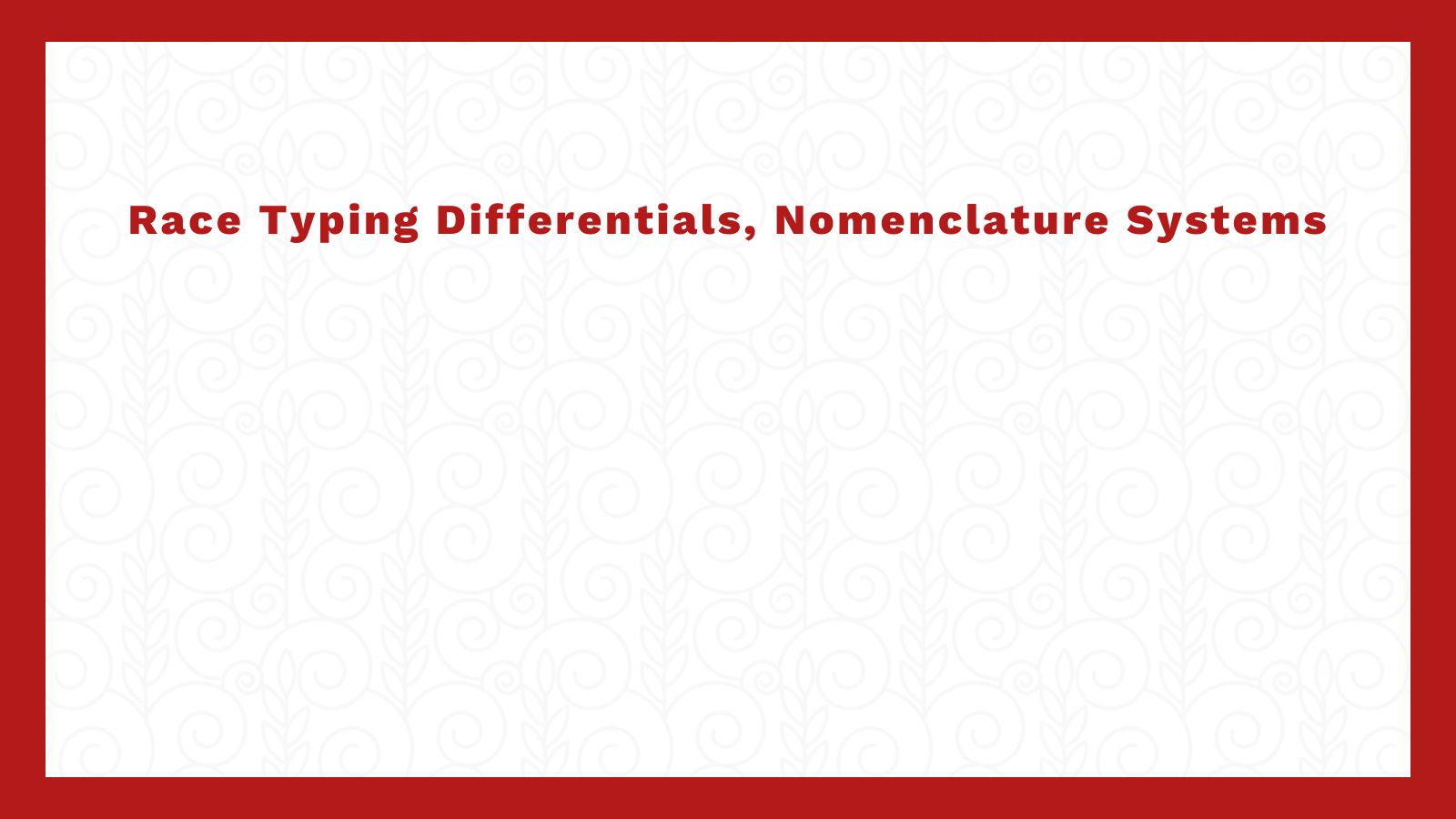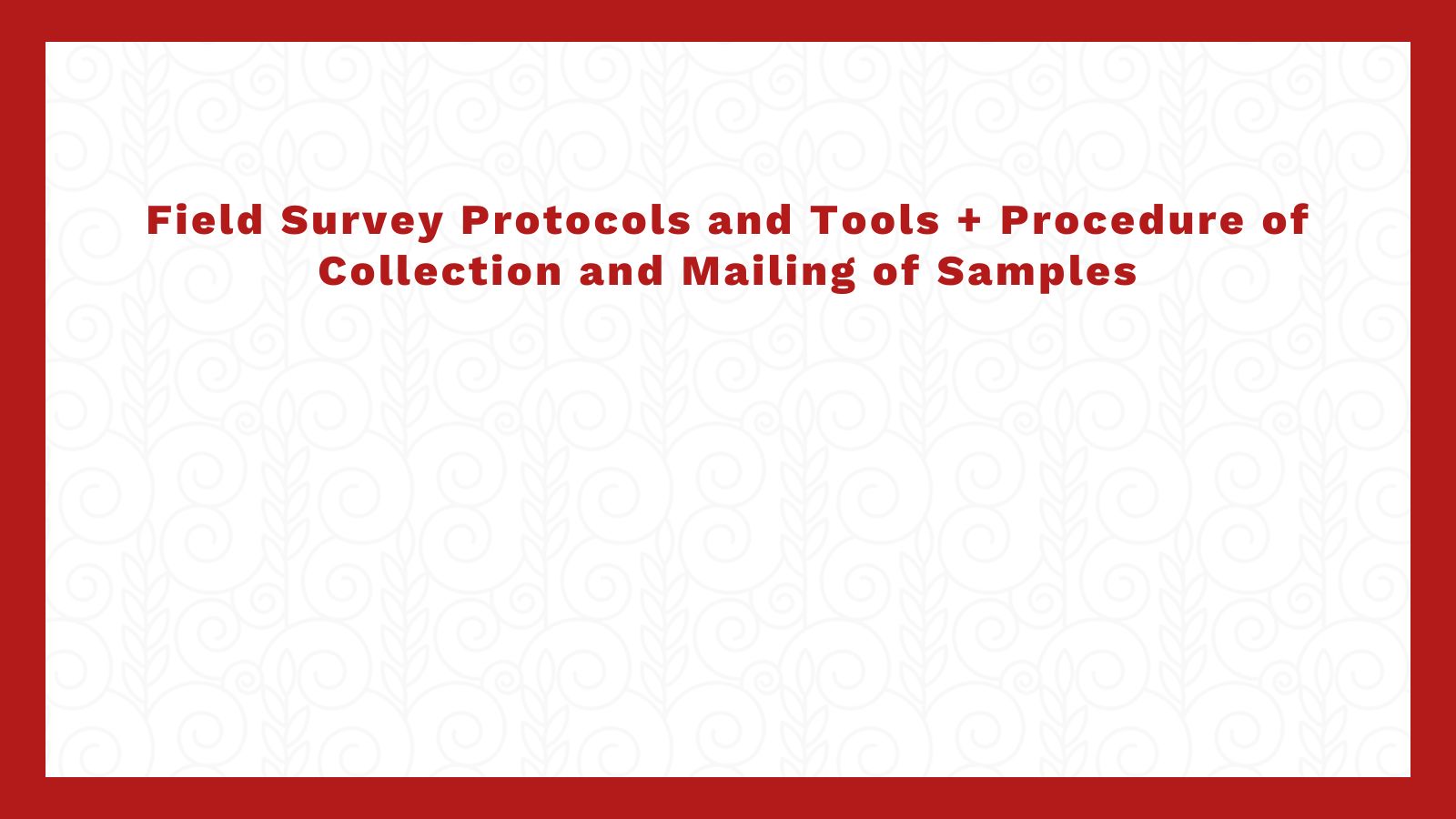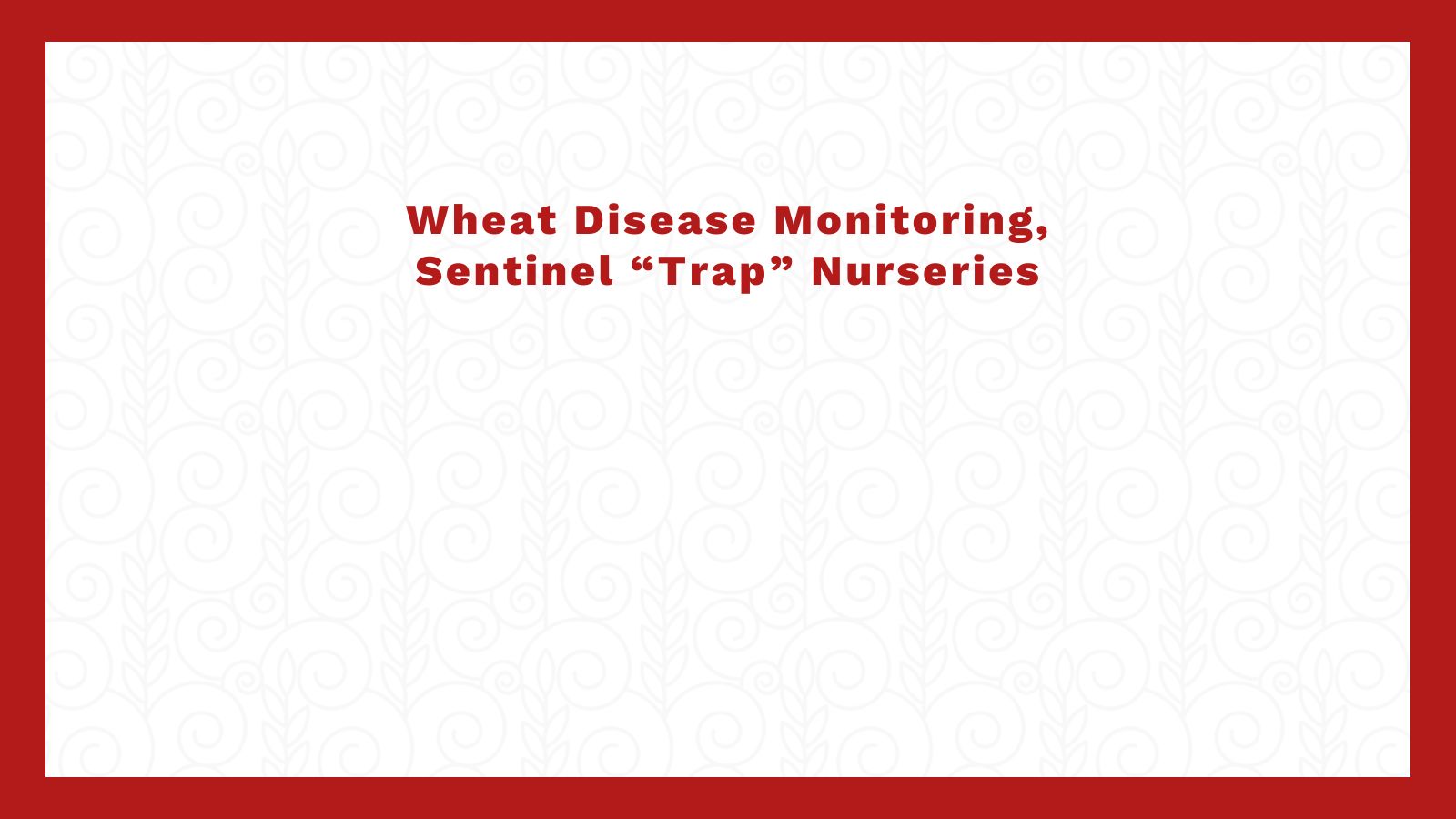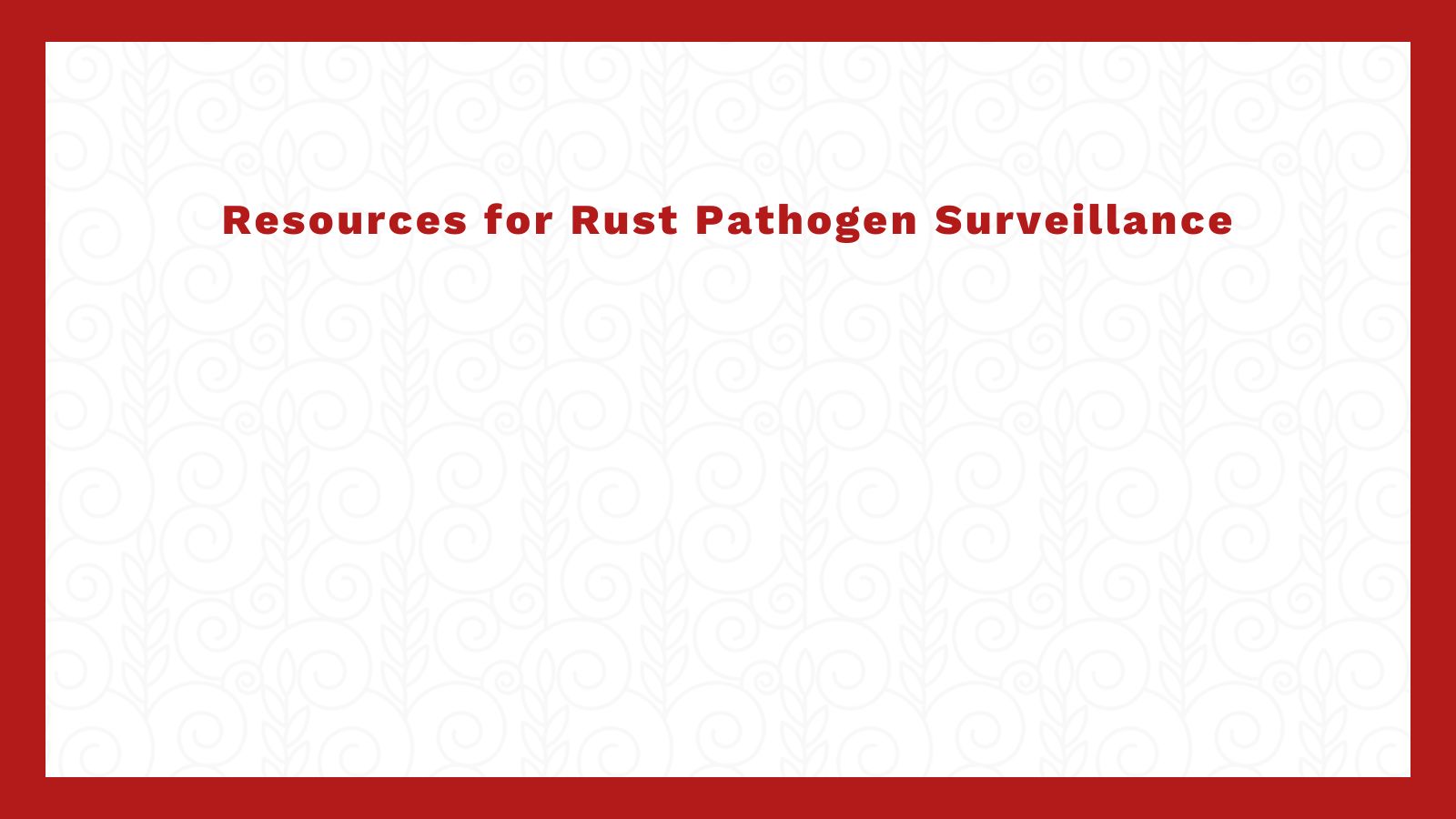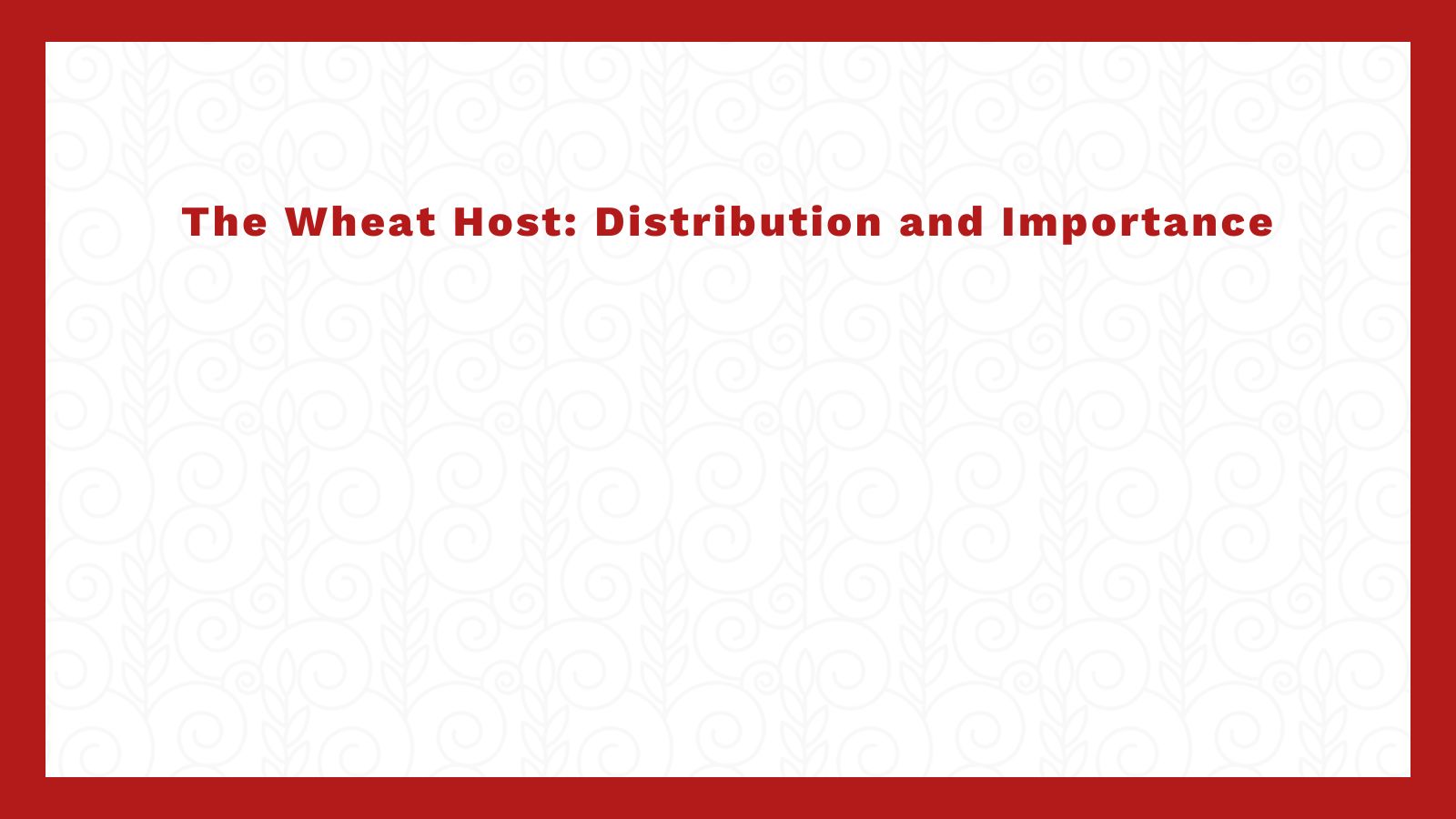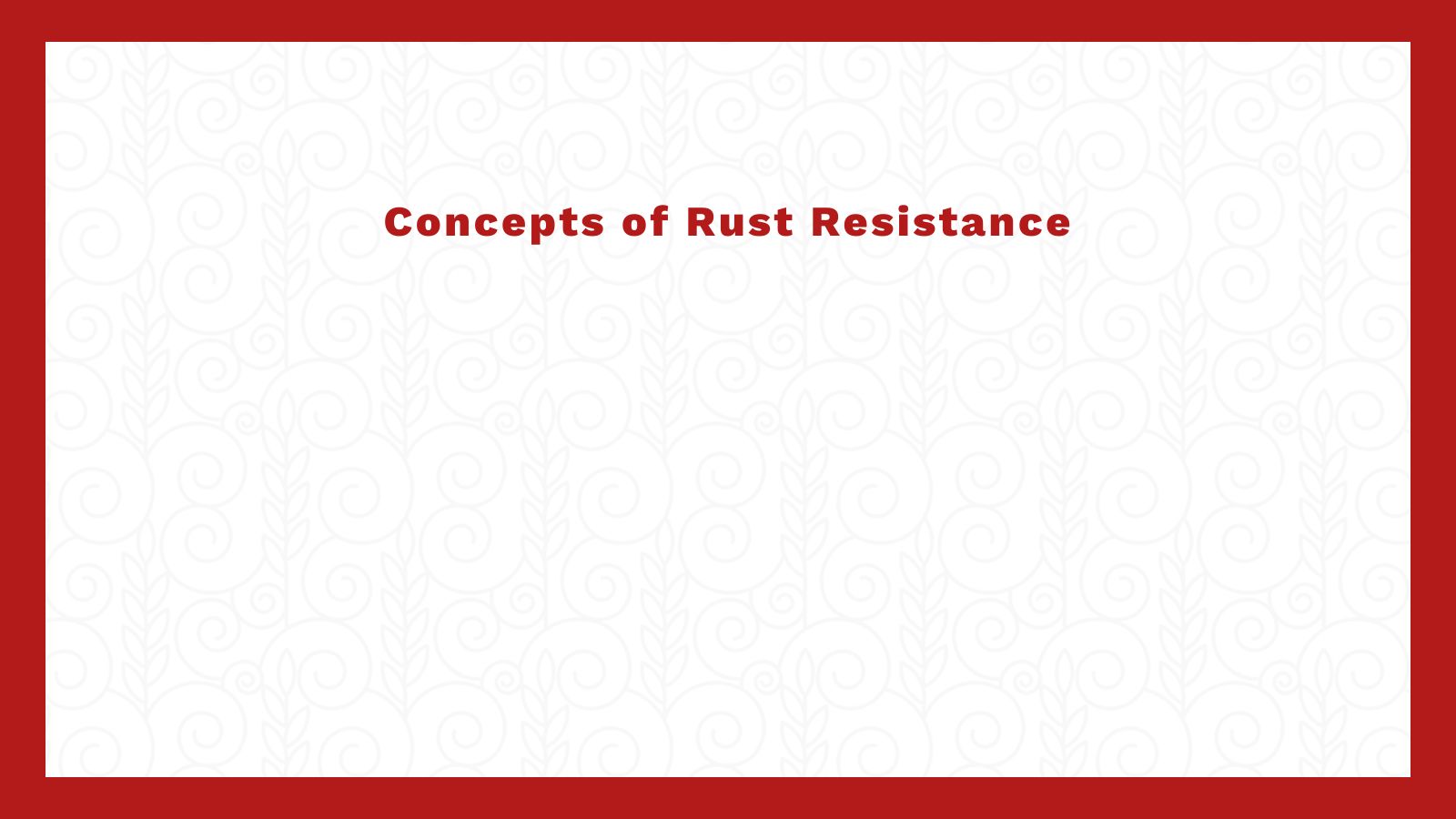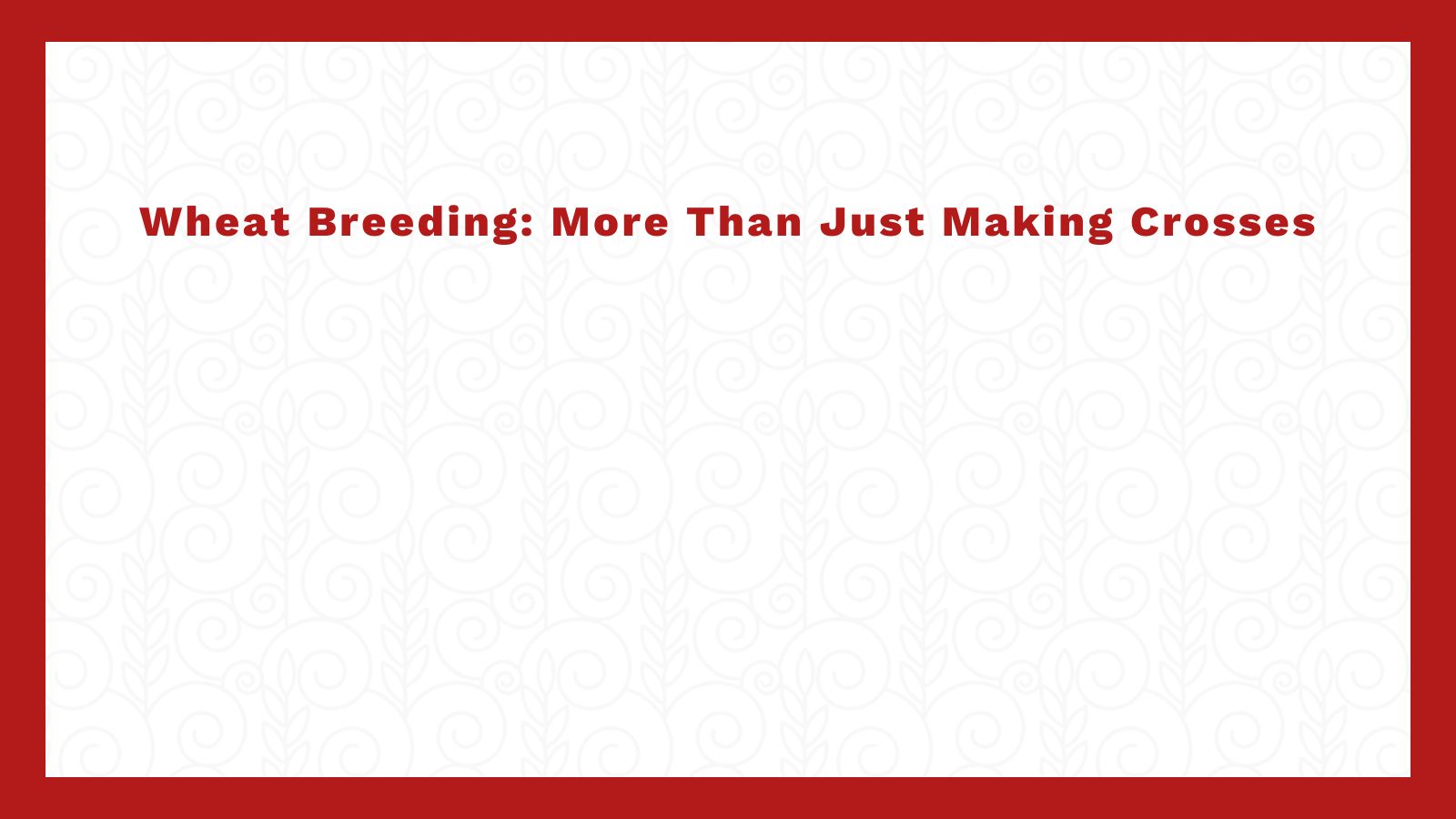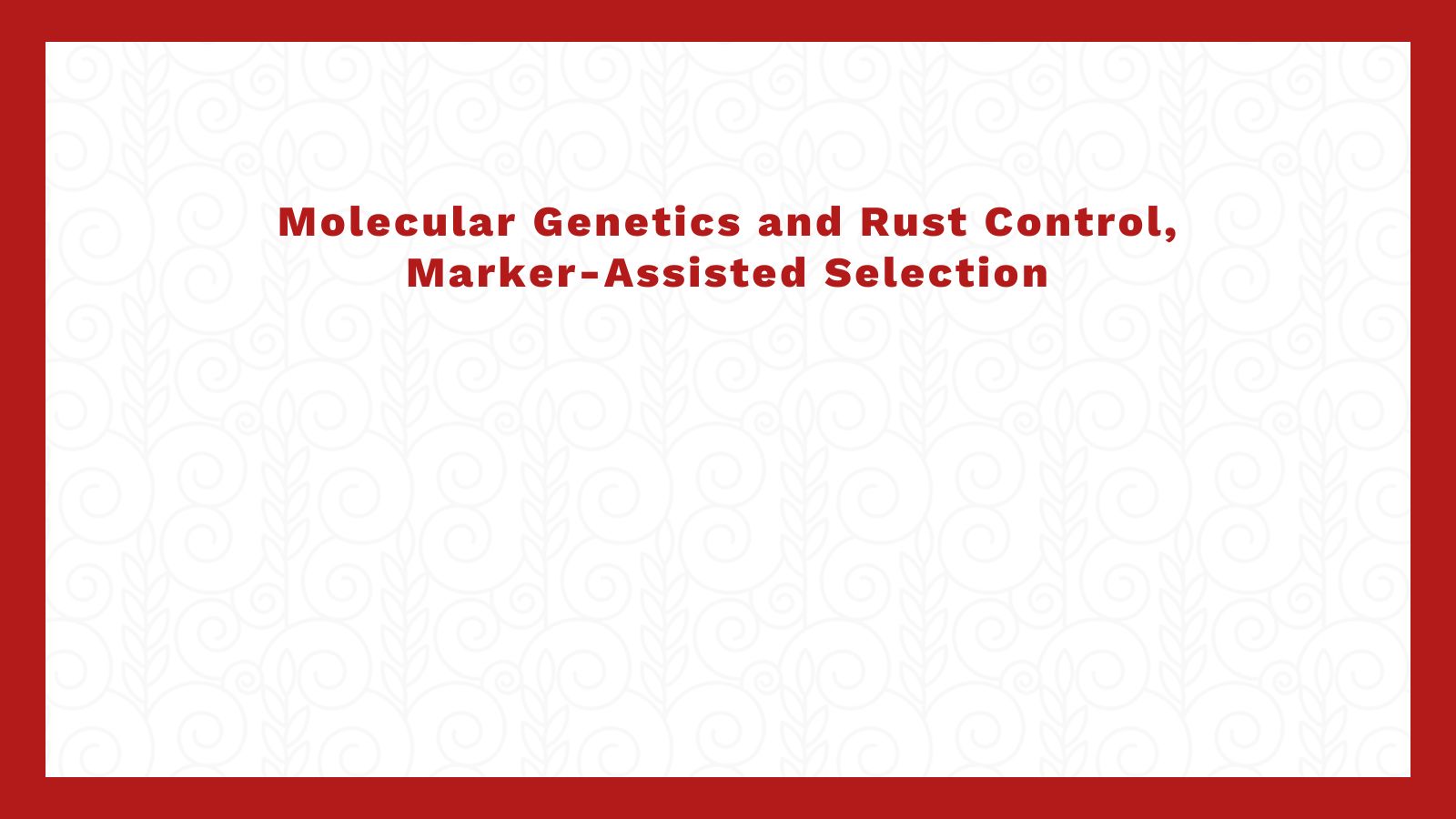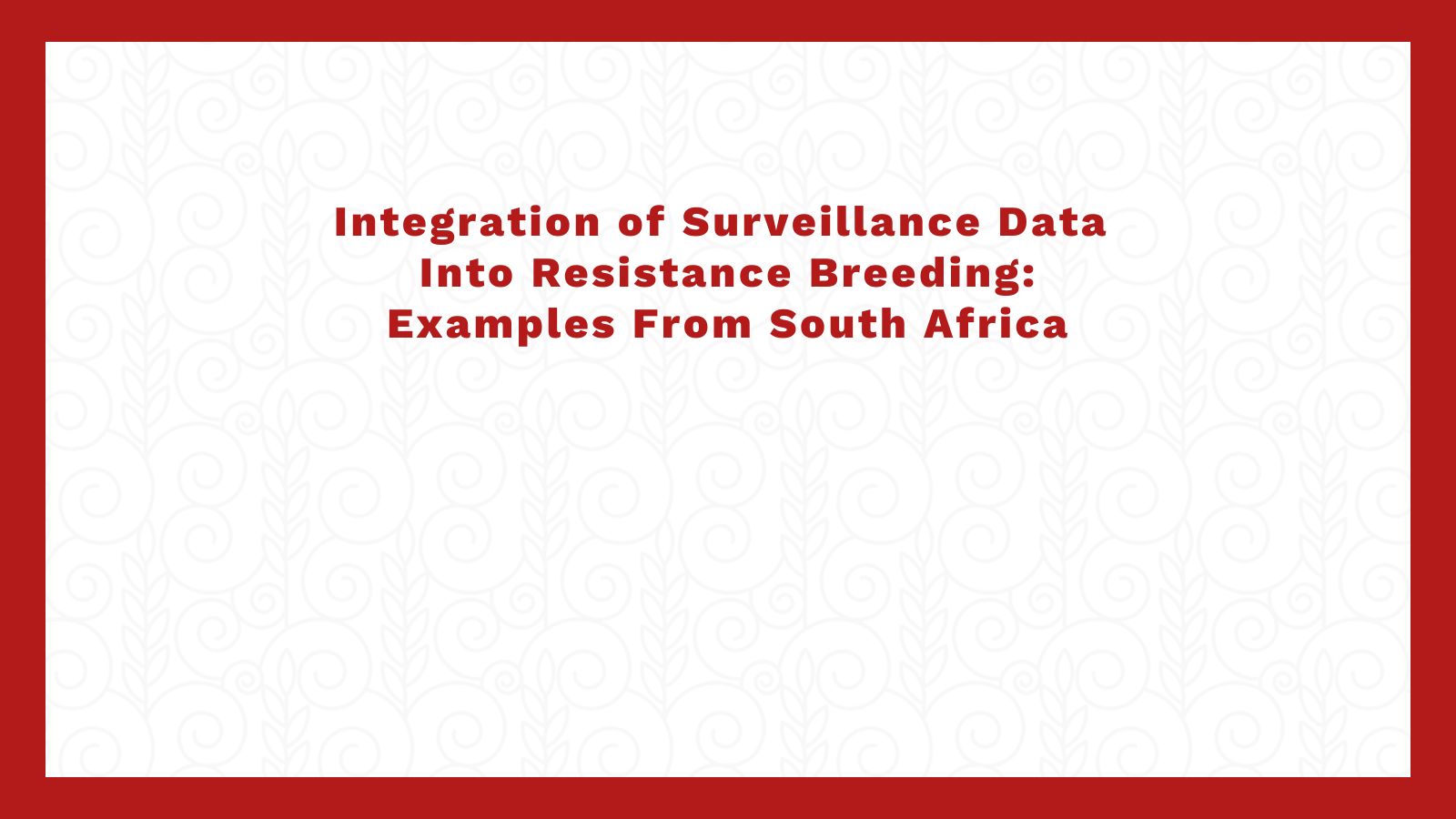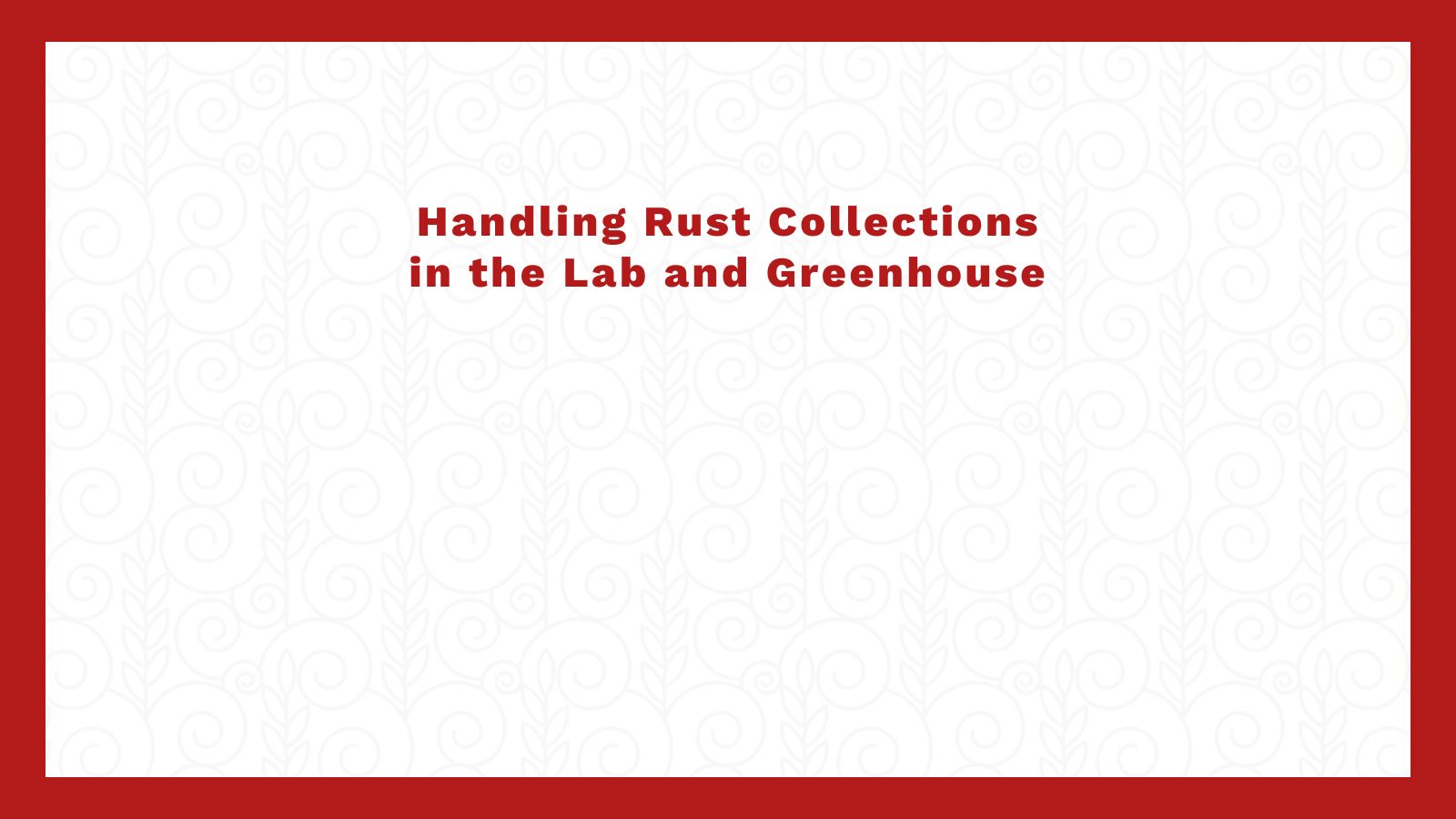World-Renowned Experts. One Online Course.
Learn “The Art and Science of Rust Pathology and Applied Plant Breeding” from wheat pathologists and breeders in this comprehensive online course.
Tailored for early- and mid-career wheat researchers, this program covers a range of topics. Anticipate mastering areas such as understanding plant diseases and their management, host-pathogen interactions, race typing, chemical interventions, engaging in practical exercises for infection type scoring and pathotype identification, implementing field survey protocols, managing wheat disease monitoring and trap nurseries, gaining practical insights into the science of wheat breeding, learning the intricacies of handling rust collections in the lab and greenhouse, and more.
Meet your instructors:

Gordon Cisar
Senior project manager for the DRRW project, Gordon Cisar is a former hybrid wheat breeder with years of experience developing winter wheat varieties for the US, and triticale cultivars for the Central Plains of the USA.

Dr. David Hodson
CIMMYT senior scientist, Dave Hodson leads global surveillance and prediction-modeling efforts to monitor fungal rusts and curtail their spread.
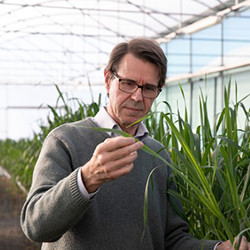
Professor Robert Park
Park is a leading rust pathologist, directs the Australian Cereal Rust Control Program, and is an expert on how fungal rust pathogens evolve and acquire virulence for resistance genes in their hosts.
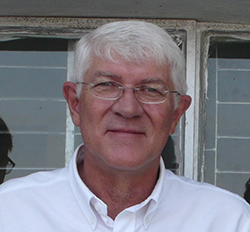
Professor Zak Pretorius
Respected pathologist with the University of the Free State in South African, Zak Pretorius was one of the first to characterize Ug99 while working with William Wagoire in Uganda.
Module 2.0: Host-Pathogen Interactions
Module 2 supporting material
- New Races of Puccinia striiformis Found in Europe Reveal Race Specificity of Long-Term Effective Adult Plant Resistance in Wheat
Chris K. Sørensen, Mogens S. Hovmøller, Marc Leconte, Françoise Dedryver, and Claude de Vallavieille-Pope, 2014 - Impacts of Resistance Gene Genetics, Function, and Evolution on a Durable Future
Richard W. Michelmore, Marilena Christopoulou, and Katherine S. Caldwell, 2013 - Host-Parasite Interaction in Flax Rust – Its Genetics and Other Implications
H.H. Flor, 1955 - A Critical Analysis of Durable Resistance
R. Johnson, 1984 - Effect of Leaf Rust on Grain Yield and Yield Traits of Durum Wheats with Race-Specific and Slow-Rusting Resistance to Leaf Rust
S. A. Herrera-Foessel, R. P. Singh, J. Huerta-Espino, J. Crossa, and J. Yuen and A. Djurle, 2006 - Problems in Preventing Plant Disease Epidemics
E.C. Stakman, 1957
Module 3.0: Pathogen
Module 3 Support Material
Century-Old Mystery of Puccinia striiformis Life History Solved with the Identification of Berberis as an Alternate Host
Yue Jin, Les J. Szabo, and Martin Carson, 2010
The Global Spread of Crop Pests and Pathogens
Daniel P. Bebber, Timothy Holmes and Sarah J. Gurr, 2014
Leaf Rust of Wheat: Pathogen Biology, Variation and Host Resistance
James Kolmer, 2013
Diversity of Puccinia striiformis on Cereals and Grasses
Mogens S. Hovmøller, Chris K. Sørensen, Stephanie Walter, and Annemarie F. Justesen, 2011
New races of Puccinia striiformis found in Europe reveal race specificity of long-term effective adult plant resistance in wheat
Chris K. Sørensen, Mogens S. Hovmøller, Marc Leconte, Françoise Dedryver, and Claude de Vallavieille-Pope, 2014
Right-Sizing Stem Rust Research
P. G. Pardey, J. M. Beddow, D. J. Kriticos, T. M. Hurley, R. F. Park, E. Duveiller, R. W. Sutherst, J. J. Burdon, D. Hodson, 2013
Somatic Hybridization in the Uredinales
Robert Park and Colin Wellings, 2012
Wheat Stripe (Yellow) rust Caused by Puccinia striiformis f. sp. tritici
Wanquan Chen, Colin Wellings, Xianming Chen, Zhengsheng Kang, Taiguo Liu, 2014
Module 4.0: Surveillance
Module 4 Supporting Materials
Trap Nursery Data Management System
JG Hansen, P Lassen, K Nazari, D Hodson, 2014
Module 5.0: Host
Module Number 5.2
Genetics of the Wheat Host
- Instructor: Gordon Cisar
- A review of the genomes of wheat and their importance in the evolution of the species, as well as their importance in the discovery of new resistance genes from progenitor species. A brief review of meiosis (and a reference for study) and the relation of chiasmata formation and crossing over as it relates to the interpretation of molecular marker information.
Module 5 Supporting Materials
Crops that feed the world: Past successes and future challenges to the role played by wheat in global food security
Bekele Shiferaw, Melinda Smale, Hans-Joachim Braun, Etienne Duveiller, Mathew Reynolds, Geoffrey Muricho
The story of wheat
The Economist, 2005
Module 6.0: Breeding
Module Number 6.3
Integration of Surveillance Data Into Resistance Breeding
- Instructor: Dave Hodson
- An overview of the critical need for surveillance to inform and enhance resistance breeding. The importance of communicating pathogen changes across regions and the value of using key races in germplasm screening programs.
- 08 March 2013
Module 6 Supporting Materials
Hybrid Wheat
G Cisar and D B Cooper
Prediction of Total Genetic Value Using Genome-Wide Dense Marker Maps
T.H.E. Meuwissen, B.J. Hayes and M.E. Goddard, 2001
Development and characterization of wheat lines carrying stem rust resistance gene Sr43 derived from Thinopyrum ponticum
Z. Niu, D. L. Klindworth, G. Yu, T. L Friesen, S. Chao, Y. Jin, X. Cai, J.‑B. Ohm, J. B. Rasmussen, Steven S. Xu, 2014
Plant Breeding Graduate Education: Opinions about Critical Knowledge, Experience, and Skill Requirements from Public and Private Stakeholders Worldwide
Repinski, Shelby L; Hayes, Kathryn N; Miller, Jamie K; Trexler, Cary J; Bliss, Fredrick A, 2011
Strategies for transferring resistance into wheat: from wide crosses to GM cassettes
Brande Wulff, Matthew Moscou, 2014
The past, present, and future of breeding rust resistant wheat
Jeffrey Ellis, Evans Lagudah, Wolfgang Spielmeyer, Peter Dodds, 2014
Trial Setup and Statistical Analysis
Andreas Büchse, Pawel Krajewski, Kristian Kristensen and Wiesław Pilarczyk
Module 7.0: Rust Resources
Module 7 Supporting Materials
Recommendations on Critical Infrastructure Kenya (Njoro) and Ethiopia (Ambo, Debre Zeit and Kulumsa)
Robert Park, Zak Pretorius, Rick Ward, 2008
The art of growing plants for experimental purposes: a practical guide for the plant biologist
Hendrik Poorter, Fabio Fiorani, Mark Stitt, Uli Schurr, Alex Finck, Yves Gibon, Björn Usadel, Rana Munns, Owen K. Atkin, Francois Tardieu, Thijs L. Pons, 2012


